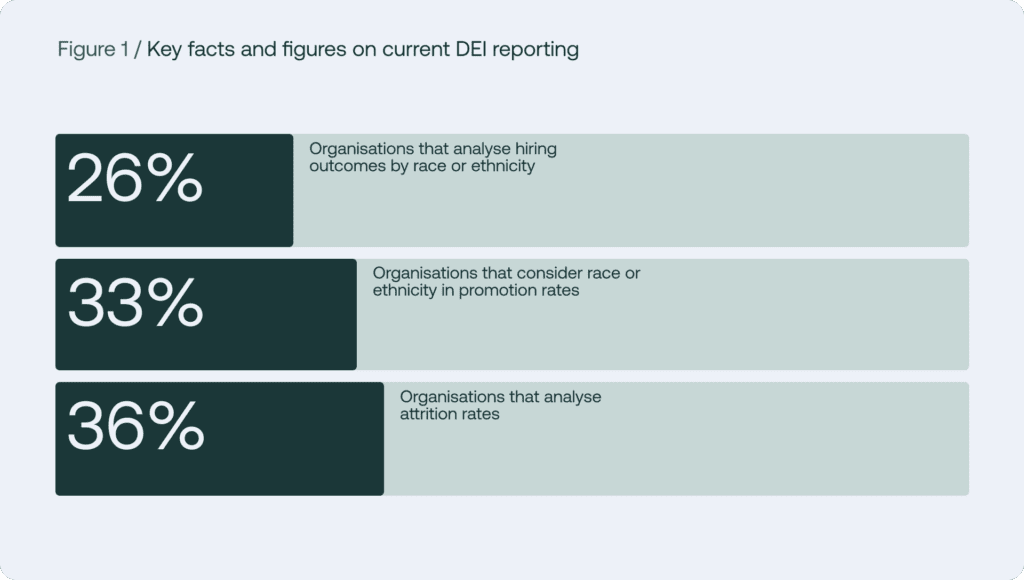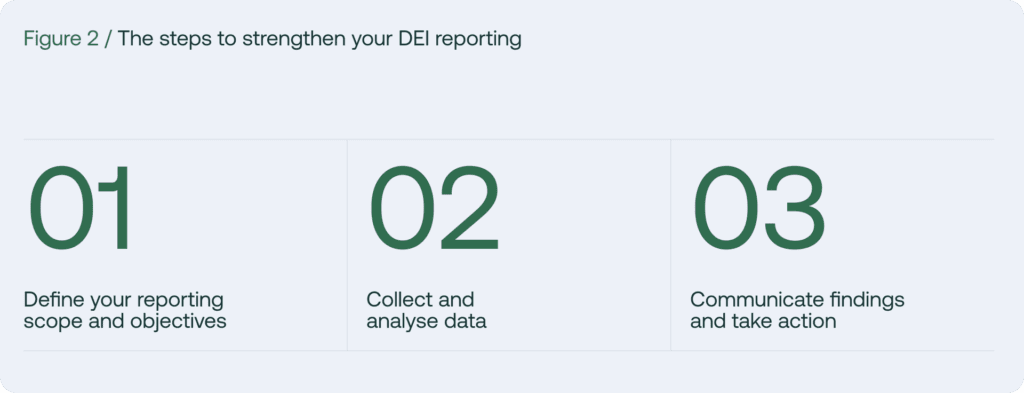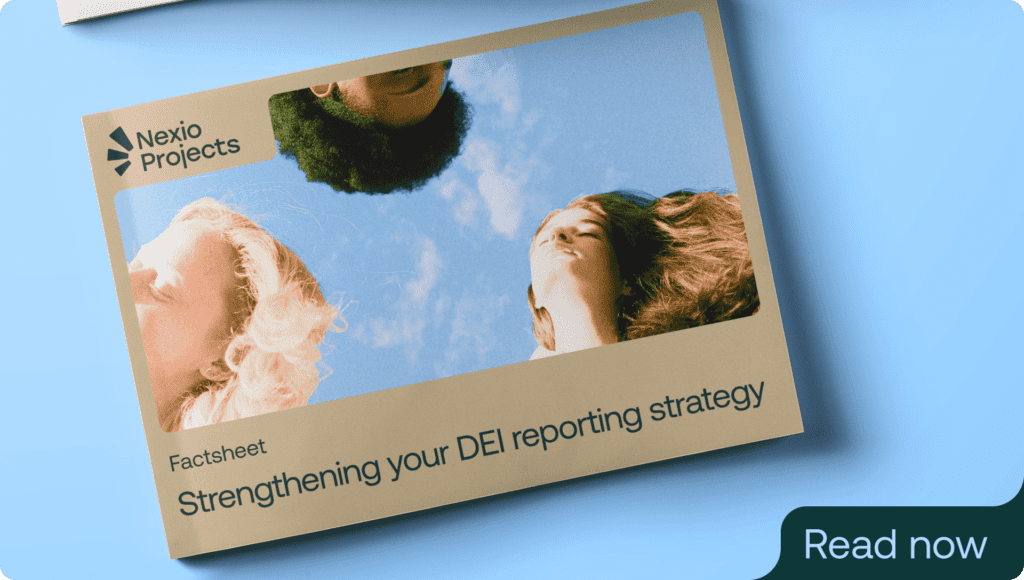



Transparency is essential in today’s corporate landscape, especially for Diversity, Equity, and Inclusion (DEI) reporting. This article outlines steps to enhance your DEI reporting strategy, ensuring it aligns with regulatory requirements and stakeholder expectations. For a deeper dive into the topic, download our free comprehensive guide.

Trust is fundamental to creating a thriving corporate culture and building a positive reputation.
In an era where transparency and social consciousness are highly valued, organisations must prioritise comprehensive DEI reporting.
New laws, such as the EU’s Corporate Sustainability Reporting Directive (CSRD), now mandate companies to report on social issues. These issues include working conditions, employment practices, and diversity in the workplace.
Additionally, the Global Reporting Initiative (GRI) has included human rights information in its disclosures.
Companies are now under pressure to back their DEI strategies with comprehensive, verifiable, and comparable data. Currently (based on a US study):


Global trends in DEI reporting emphasise standardising metrics through frameworks like GRI and SASB, increasing regulatory requirements, and enhancing transparency and accountability.
Companies are focusing on intersectionality, leveraging technology for analytics, and integrating DEI goals into business strategies.
Key trends also include employee engagement, balancing global and local approaches, longitudinal reporting, and broad stakeholder engagement.
Organisations should establish a systematic reporting framework that reflects their DEI maturity level to effectively communicate their efforts.
Follow the steps below to build a solid foundation for more effective DEI reporting. This will help to drive meaningful change and promote a more inclusive environment.


Knowing what to focus on for your DEI reporting depends on your material topics and goals for the report.
Organizations find themselves at different points along the sustainability maturity curve. For the sake of comprehension, this article simplifies the approach on two levels: compliance and best practice.
This level focuses on meeting minimum regulatory requirements. Examples include:
Leading organisations demonstrate a proactive commitment to DEI initiatives. Examples include:
Include interviews or case studies to provide context and highlight the impact of your DEI initiatives.
Adhere to recognized standards like GRI and regulations such as the CSRD in the EU.
Regardless of your organization’s DEI maturity level, take steps to strengthen your reporting strategy. Align these steps with your organisation’s strategy:
DEI reporting is not just about compliance; it’s about fostering a culture of inclusion and accountability. By implementing these strategies, organisations can drive meaningful change and create a more diverse and equitable workplace.
For further insights, explore the full guide.

